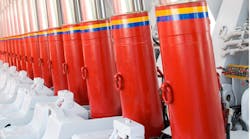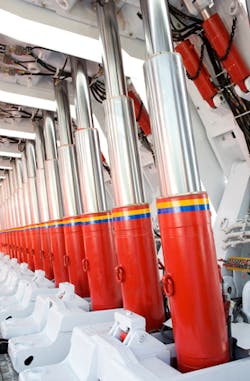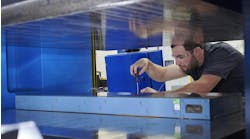Hallite 708 bearing material is designed for use in hydraulic-cylinder piston (overlap) and rod (open gap) seals in construction, mining, material handling, and similar heavy equipment. It is a fit-for-purpose component to provide precise alignment, reducing the potential for metal-to-metal contact between moving parts.
Hallite 708 bearings are machined to tight tolerances on thickness for applications requiring high load-bearing capacity, high compressive strength, and high wear resistance. They are also intended as an alternative when fiber-filled bearings are not suitable. They have a compressive strength at 23°C of 57 MN/m2. Dynamic coefficient of friction against a steel surface of 0.2 µm Ra/8 µin. CLA is 0.22 dry and 0.05 lubricated. Maximum speed rating is 5.0 m/sec and operating temperature ranges from –40° to 100°C.
Lee Shek, Hallite Technical Director, says, “Hallite 708 is designed for applications with a load threshold beyond that of Hallite 506, our best-selling bearing.” The new material is intended for use in applications at the upper limits of load and wear. It has been successfully tested in underground mining applications and is easy to install.
For more information, contact Hallite Seals Americas, Wixom, Mich., at (248) 668-5200, or visit http://hallite.com.


